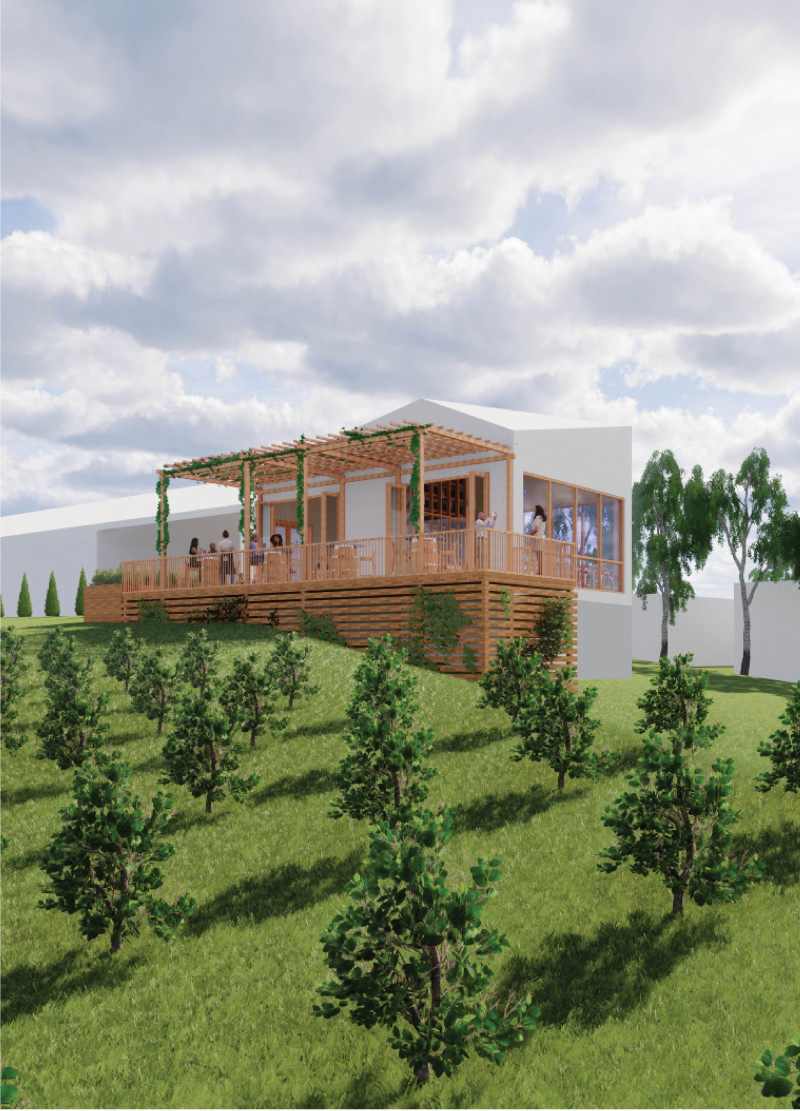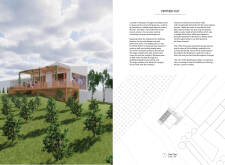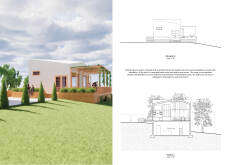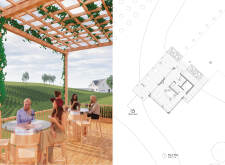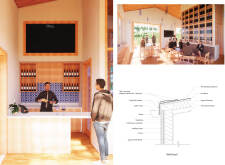5 key facts about this project
At its core, the Vintner Hut functions as an inviting environment for visitors to engage with wine tasting experiences, educational tours, and communal gatherings. The layout is thoughtfully planned to enhance movement and interaction, featuring a spacious tasting room that leads to large panoramic windows. This strategic use of glass allows natural light to filter into the space, creating an open and warm atmosphere while framing beautiful views of the surrounding vineyards. The indoor area is complemented by a deck that integrates with the landscape, encouraging visitors to move seamlessly between the natural surroundings and the built environment.
The architectural design of the Vintner Hut is characterized by its commitment to local materials and sustainable practices. The use of wood in the decking and pergola reflects a direct connection to the vineyard context, while also promoting ecological sustainability through responsible sourcing. Additionally, the design incorporates cork, a material synonymous with wine culture, used both as an insulation type and a showcase feature. This choice not only enhances the aesthetic appeal but also serves practical functions, reinforcing the relationship between the architecture and its purpose.
Unique design approaches are evident throughout the Vintner Hut, particularly in the way it interacts with the landscape and promotes inclusivity. The thoughtful inclusion of a ramp at the entrance ensures accessibility for all visitors, demonstrating a modern understanding of the importance of inclusive design in public spaces. Furthermore, the integration of a pergola adorned with vines creates an organic interface between the structure and the vineyard. This feature not only enhances the visual appeal but also emphasizes the project's commitment to merging architecture with nature.
The open-plan configuration of the tasting room encourages social interaction and embodies the communal spirit of wine culture. Furnishings, such as tables resembling wine barrels, reinforce the thematic focus on the viticulture experience and are designed to facilitate conversation among guests. Meanwhile, the large windows strategically positioned throughout the design provide opportunities for natural ventilation while maintaining unobstructed views of the surroundings.
In summary, the Vintner Hut stands as a thoughtful architectural response to the context of Alenquer's viticultural landscape. It embodies a holistic approach to architecture that values sustainability, accessibility, and community interaction, offering a functional space that honors the traditions of winemaking. This project serves as a compelling example of how architecture can thoughtfully engage with its environment, marrying the built form with the natural world. For those interested in delving deeper into this project, exploring the architectural plans, sections, and unique design ideas will provide further insights into the careful considerations that shape the Vintner Hut's identity and function.


